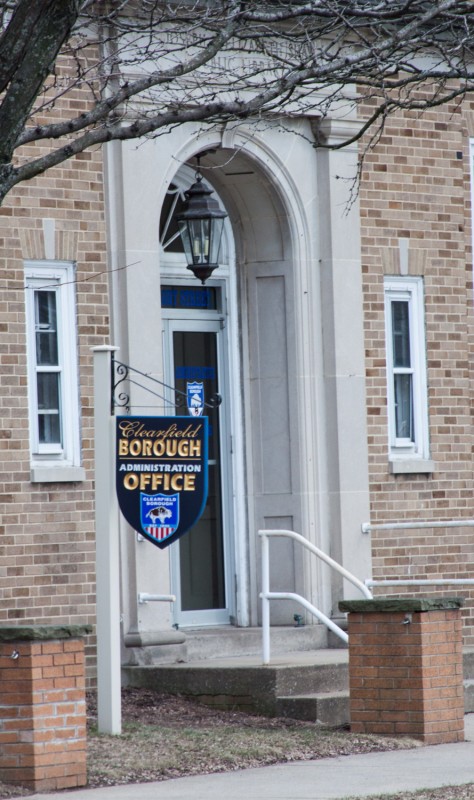CLEARFIELD – Demographic and financial information paint a bleak future if changes aren’t made in Clearfield Borough and Lawrence Township.
At a special meeting prior to the regular monthly Clearfield Borough Council meeting, representatives from the Pennsylvania Economy League presented their study on the demographics and finances of Clearfield Borough.
The purpose of the study is to analyze the demographics and financial history of the borough and the township, project revenues and expenditures for both municipalities from 2016 through 2021, explore the potential for a consolidation of both municipalities under a home rule charter, combine the financials for the two municipalities to project revenues and expenditures for a consolidated municipality, review departmental operations and management to identify key factors for a consolidation and to draft a home rule charter and joint agreement for the proposed municipality.
According to the study, from 1990-2010, there has been a 2.4 percent growth in the population of residents ages 18-64; a 19 percent decline of residents under the age of 18 and a 16.2 percent decline in residents ages 65 and older.
In that timeframe, the number of owner-occupied dwellings decreased by 10.2 percent and an increase of 13 percent in renter-occupied dwellings.
The study also showed a 50 percent increase of vacant units and that the median housing values in the borough are slightly lower than the county and significantly lower than the rest of the state, with a slower rate of growth. The median household income is also lower in the borough than in the county and in the state.
The study shows that the numbers indicate a pattern of less wealth in the borough with flat growth in the wage-producing population of residents age 18-64.
Less wealth generally means less property tax and wage tax growth.
Financially, from 2010-2014, the borough has seen a cumulative surplus of $97,050. The borough has been fortunate to receive grant money and capital funding.
The study noted that the unaudited revenues and expenditures are higher than the 2015 budget due to capital grants and expenses. The fiscal year for 2015 ended with a slight surplus instead of a deficit due to $162,477 in real estate revenues that were over the budgeted amount.
The borough’s finances have been bolstered by the ethanol plant, which resulted in an annual real estate tax increase of about $160,000.
While the local services tax has increased, the earned income tax declined, which resulted in the two offsetting each other. As in most municipalities, expenditures have increased, with capital projects being the largest overall growth. The capital projects were offset to a point by grant revenue. Employee benefits and wages had the largest personnel expense increases.
The study found that there were deficits in the general fund for 2012 and 2014. These deficits were offset by a one-time revenue in 2013 in the form of a protested tax payment, the surcharge for the borough’s sewer work, a higher state grant and a higher earned income tax due to the change in collection. Some of the borough’s budget deficits have been covered by a substantial cash balance but once that balance is gone, the borough could face financial problems.
When calculating revenue projections the study used the 2016 budget as a base line that is adjusted based on the borough’s historical patterns. The projections were made with no change in the borough’s present real estate tax, no increase in tax rates or fees, no change in the local services tax or real estate transfer taxes. The projections kept the same number of employees and based the police and public works salary increases at the current contract levels and then a 2 percent annual increase. The health care was figured using a 6 percent annual increase.
The study predicts that annual deficits will grow and the cash balance will be depleted by 2020 unless the budget deficits are addressed. The study also noted that property taxes have held at 25 mills since 2007 and that the present sewer surcharge is not keeping pace with the PennVEST debt. However, the deficits are being covered by the borough’s fund balance.
The study recommends a potential real estate tax increase to maintain the borough’s fund balance and to prevent future deficits, as well as additional revenue increases and expenditure reduction to maintain cash balance.
The study also recommended the borough maintain separate accounting for each fund and monthly presentations to the council to compare monthly and year-to-date financials with the budget.
For capital expenditures, the study recommends creating a five-year capital plan and a one-year capital budget with a separate capital fund.
For the sewer fund, the study recommends using the sewer fund only for sewer-related revenues and expenses. The borough should develop an annual budget for the sewer fund and develop fee structures, which would be adequate to eliminating the deficits.
